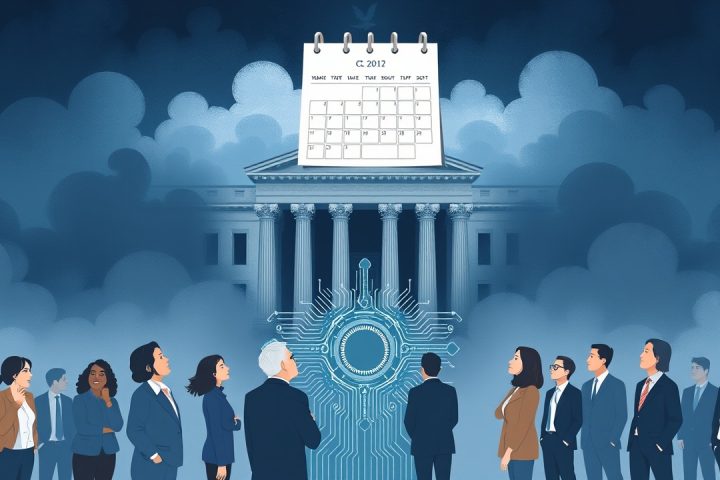Statement Summary
The SEC has launched “Project Crypto,” an initiative aimed at positioning the U.S. as the leader in crypto asset markets as part of President Trump’s vision to make America the world’s crypto capital. This initiative plans to modernize securities regulations to support innovation, enhance market dynamics, and adapt to the evolution of digital assets. Key efforts include:
- Establishing clear guidelines for crypto asset classifications
- Improving liquidity through the tokenization of securities
- Promoting the use of self-custody options
Additionally, the SEC aims to streamline regulatory processes, create friendly environments for innovative technologies like decentralized finance, and foster conditions for increased participation in the on-chain economy. The initiative emphasizes flexibility in regulatory frameworks to avoid stifling startup growth while protecting investors. Overall, Project Crypto represents a significant step towards modernizing financial markets in alignment with technological advancements.
Original Statement
Good afternoon. Thank you, Norm, for your kind introduction and the invitation to be here. It gives me great pleasure to be with you all, particularly at what I believe is a defining moment for American leadership in the crypto asset markets. Before I share a few reflections, I want to thank the America First Policy Institute for convening such a timely conversation. And, I must note, in order to keep my compliance folks happy, that the views I express here today are my own and do not necessarily reflect those of the SEC as an institution or of the other Commissioners.
Today, I would like to discuss what Commissioner Hester Peirce and I are calling “Project Crypto,” which will be the SEC’s north star in aiding President Trump in his historic efforts to make America the “crypto capital of the world.” But before I discuss our plan for crypto market primacy, let me take a few moments to revisit some inflection points in the history of our financial markets that bear similarities to the one we are at now, so that the future we shape is worthy of the legacy that we inherit.
Historical Context
The winds of innovation have always swept through our capital markets, often at gale force. In 1792, they rustled the leaves of a buttonwood tree, beneath which two dozen stockbrokers assembled to establish the forerunner to the New York Stock Exchange. That modest agreement—fewer than a hundred words handwritten on a slip of parchment—set in motion an elegant design that would govern the flow of capital for generations.
In the centuries since, our markets have never stood still. They have expanded, evolved, and reinvented themselves in step with the ideas and technologies of their time. Markets are dynamic because of the people who participate in them. Markets channel human ingenuity toward society’s most intractable problems by rewarding those who develop the most innovative solutions that others value enough to buy.
The SEC’s role is to safeguard markets that allow the spark of human creativity and skill to benefit society. Over the arc of its history, the agency has both enabled innovation and, regrettably at times, stifled it. Fortunately, progress has a way of prevailing. And when our regulatory posture is calibrated to meet innovation with thoughtfulness rather than fear, America’s leadership position has only grown stronger.
Modern Challenges and Opportunities
To achieve President Trump’s vision of making America the crypto capital of the world, the SEC must holistically consider the potential benefits and risks of moving our markets from an off-chain environment to an on-chain one. We are at the threshold of a new era in the history of our markets. As I mentioned earlier, today I am announcing the launch of “Project Crypto”—a Commission-wide initiative to modernize the securities rules and regulations to enable America’s financial markets to move on-chain.
Just a few weeks ago, President Trump signed the GENIUS Act into law, ensuring that America will continue to lead in global payments with a gold standard stablecoin regulatory framework. Upon signing the GENIUS Act into law, I was pleased that President Trump endorsed Congressional efforts to pass crypto market structure legislation by the end of the year.
Key Initiatives of Project Crypto
Project Crypto will involve a broad range of initiatives across the Commission. First, we will work to bring crypto asset distributions back to America. The days of convoluted offshore corporate structures, decentralization theater, and confusion over security status, are over. President Trump has said that America is in its Golden Age—and under our new agenda, our crypto asset economy will be, too.
In line with the PWG Report, a key priority of mine will be to establish—as swiftly as we can—a regulatory framework for distributions of crypto assets in America. Capital formation is at the heart of the SEC’s mission, yet for too long the SEC ignored market demands for choice and disincentivized crypto-based capital raising.
Despite what the SEC has said in the past, most crypto assets are not securities. But confusion over the application of the “Howey test” has led some innovators to prophylactically treat all crypto assets as such. I have directed the Commission staff to work to develop clear guidelines that market participants can use to determine whether a crypto asset is a security or subject to an investment contract.
Conclusion
As we advance these priorities, I look forward to working with my counterparts across the Administration to make the United States the crypto capital of the world. This represents more than a regulatory shift—it is a generational opportunity. From the leaves of a buttonwood tree to ledgers on a blockchain, the winds of innovation still blow—and it is our task that they carry American leadership forward. After all, ladies and gentlemen, we have never been content to follow. We will not watch from the sidelines. We will lead. We will build. And, we will ensure that the next chapter of financial innovation is written right here in America.
Thank you very much for your time today. I encourage you to be attentive to our coming announcements and proposals and, as always, I welcome your thoughtful comments and suggestions.




